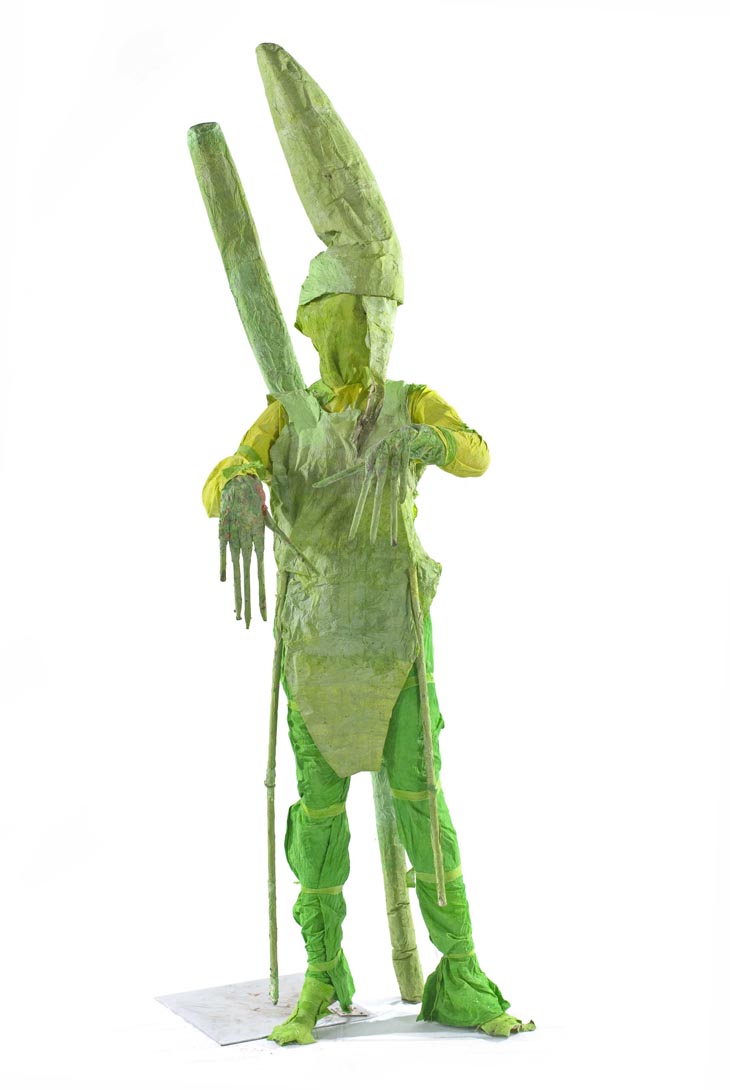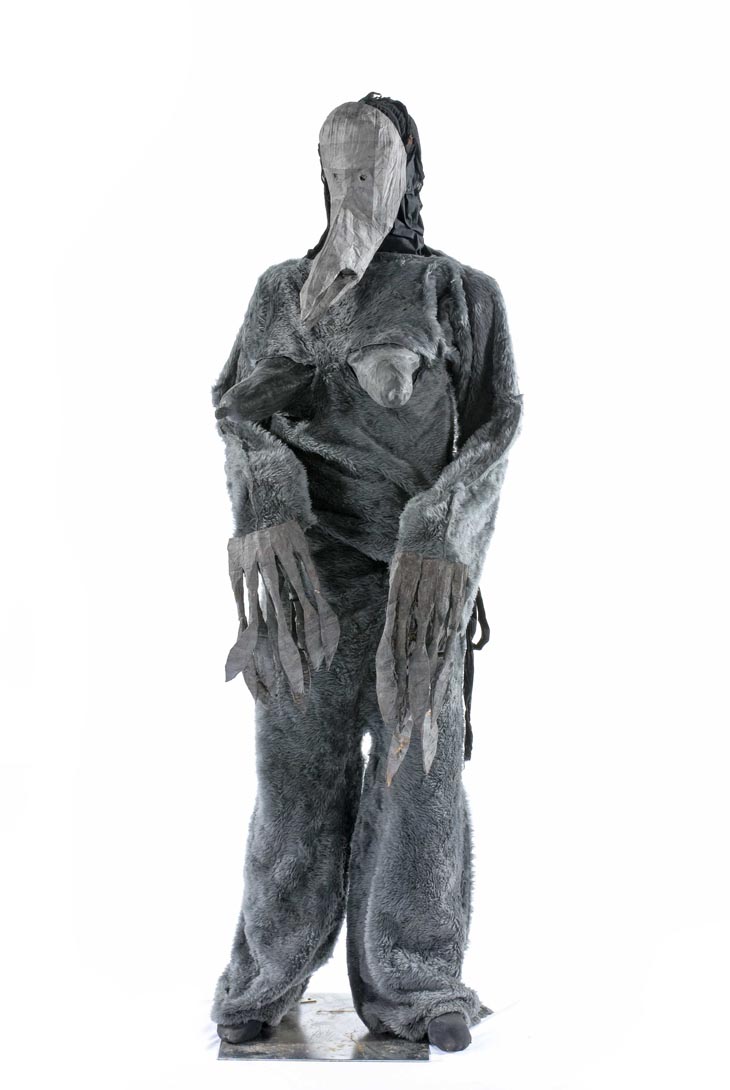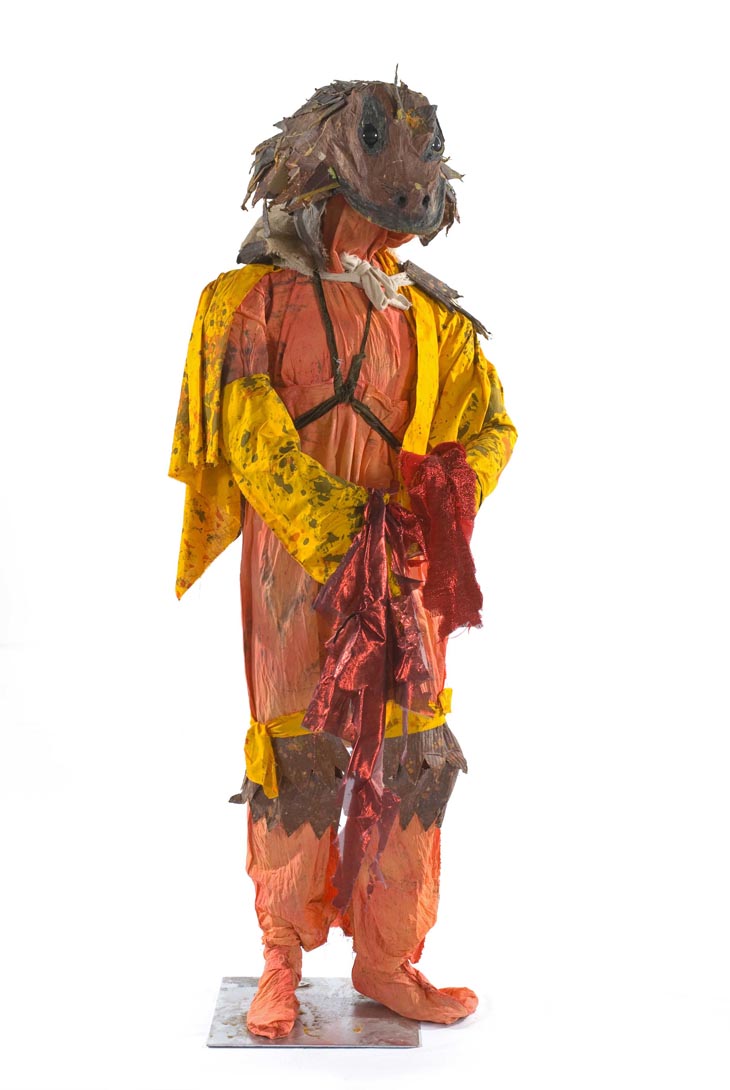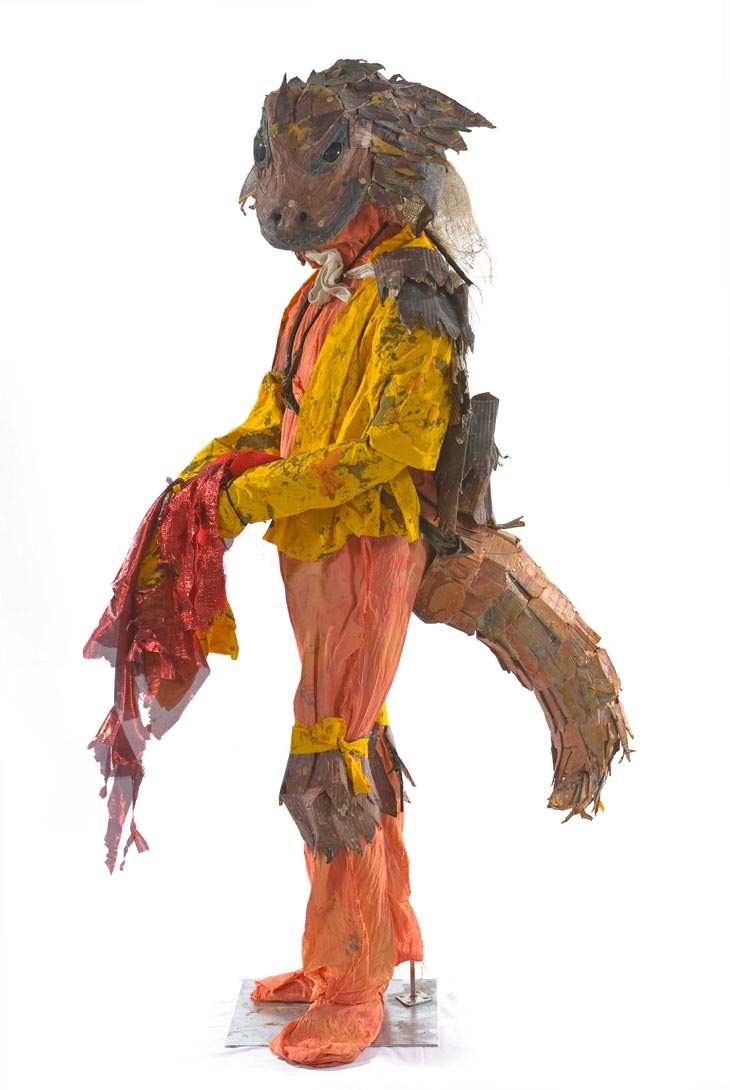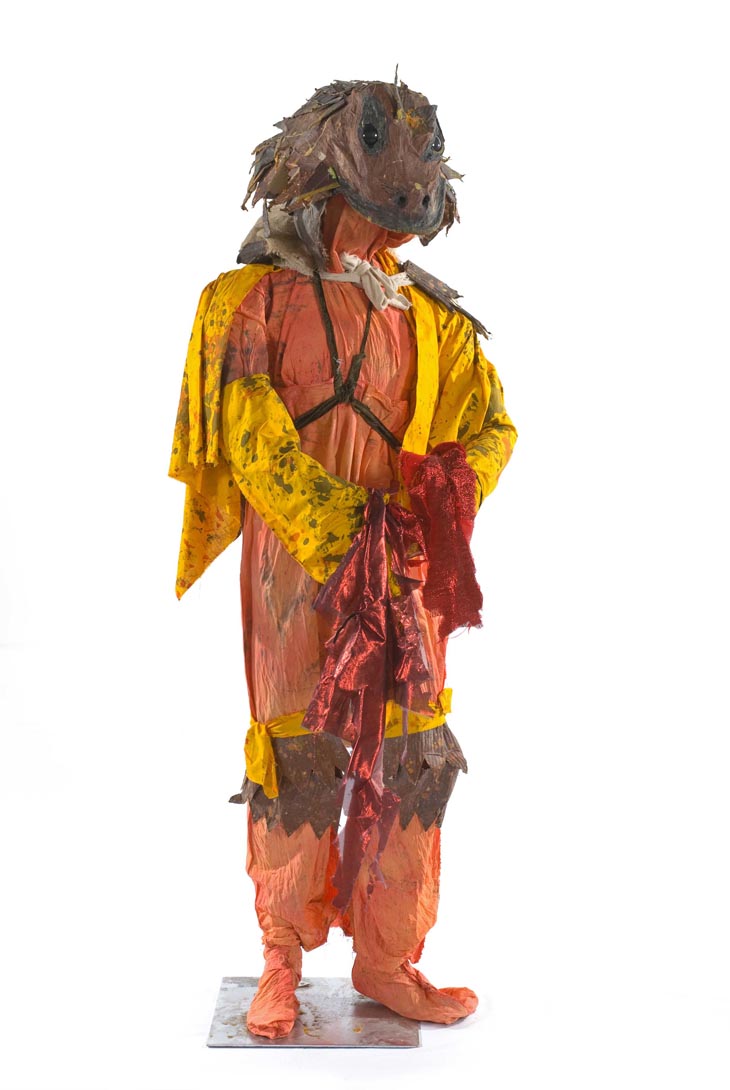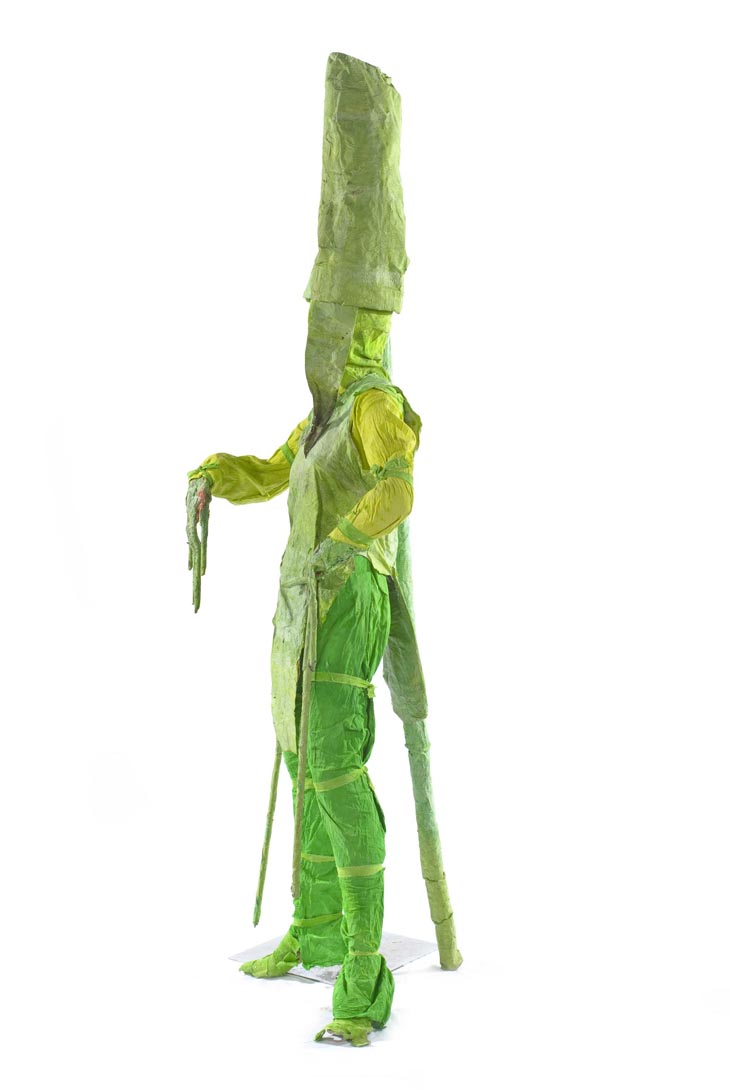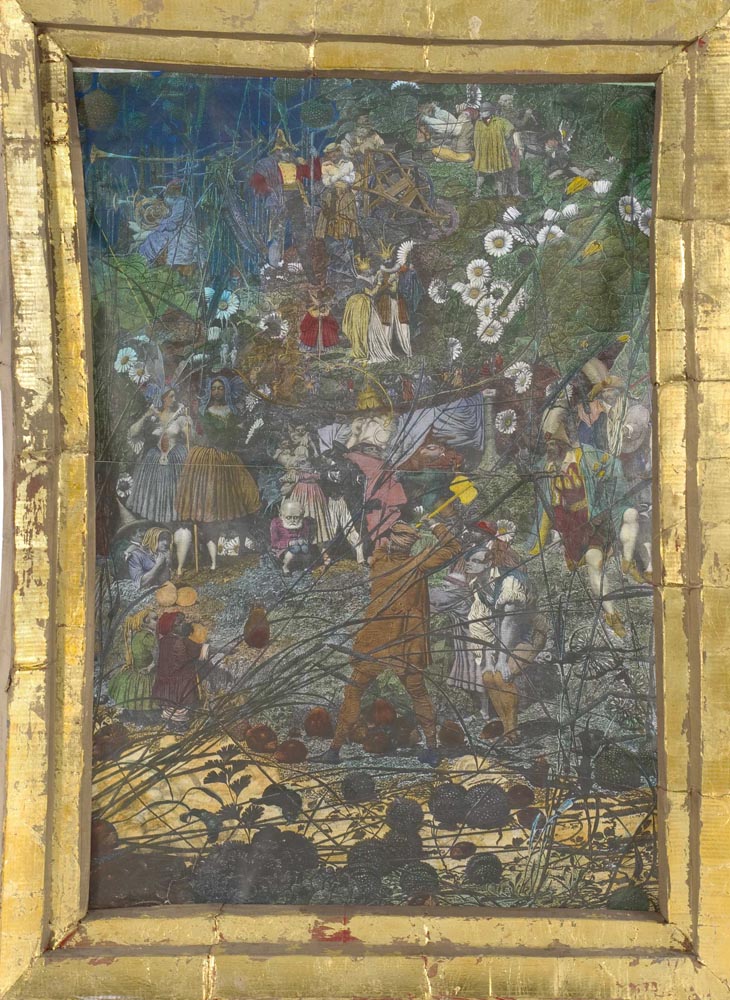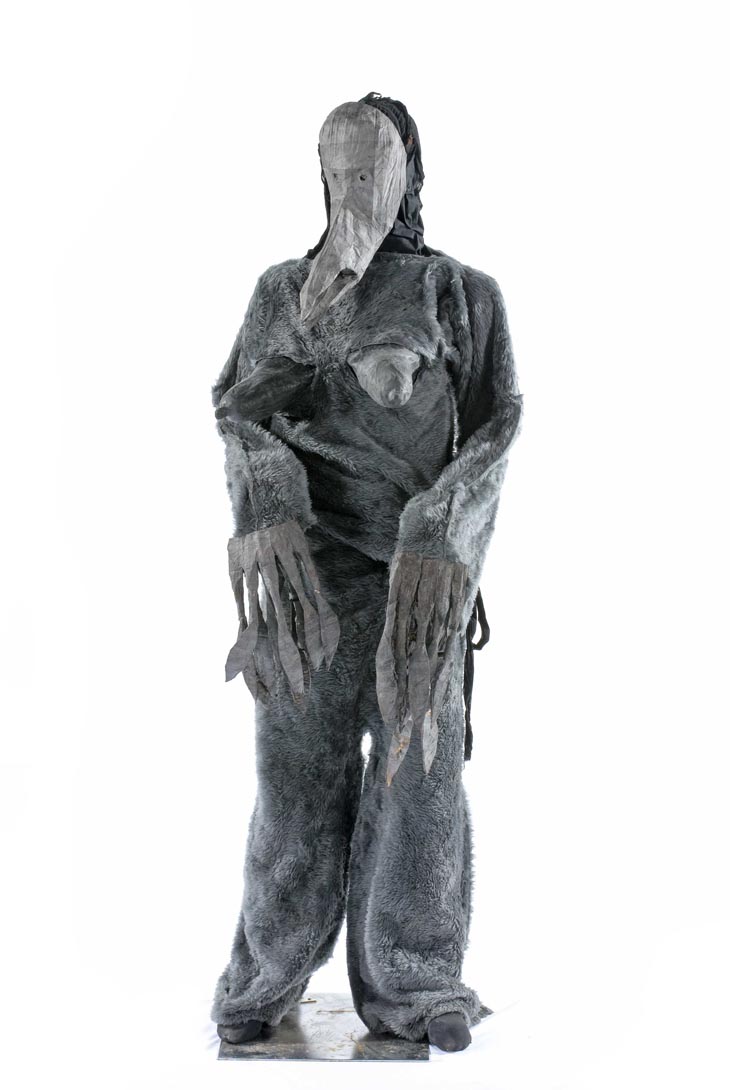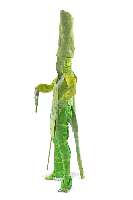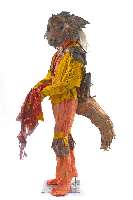Chetwynd celebrates occasions in cultural history that exemplify extremist behaviour and belief. Her work cites instances that blur genius and madness to expose the raw zeal, aspiration, and creativity of utopian vision. The Lizard, The Mole, and The Stick Insect were all made as costumes for a performance about wildlife conservation. Chetwynd’s play was inspired by Joy Adamson, author of Born Free, a true story about Elsa, an orphaned lion cub that Adamson adopted, raised, and re-habituated back into the wild. Though Adamson is acclaimed as a pioneer of conservation practice, her fervent love of animals made her unable to relate to humans: she was murdered by one of her employees who mutilated her body to make it look as if she was killed by a lion. “I started making animals because you can’t have a production about this type of person without that environment.†Chetwynd explains.
“Enthusiasm makes sense to me,†Chetwynd reveals. “My work is more like comedy or carnival rather than something that is professionalised; it has a fun rebellious energy. Humour is often marginalised, it’s underestimated how hard you have to work to get or keep your ground. My performances are really gestural and are not meant to exist afterward. I wanted to burn the costumes after, but really had to change my attitude. My heroes are the Marx Brothers, but I only know them off video. They bothered to make their fun, gestural, off-hand experience package-able, not in a dark way but in a way that people can enjoy afterward forever. It’s important to make an effort to make things that last so they can continue to communicate to people."
The Fairy Feller is an enlarged hand-tinted and gold-leafed photocopy of Richard Dadd’s most famous painting. Epitomising the Victorian fervour for the supernatural and occult, Dadd’s canvas shows a fantastical narrative that draws from mythology and literature. Its obsessive detail is often attributed to Dadd’s psychopathy: the painting, made during his long incarceration at Bethlem Hospital for the criminally insane, took 9 years to complete. Spartacus Chetwynd appropriated this image to use as a prop in a performance that celebrated radical British visionaries such as William Blake and Mary Wollstonecraft. In the performance, nymphs burst from the painting and danced to music from The Seventh Seal, an Ingmar Bergman film which takes its name from the biblical prophecy of The Final Judgement.
Chetwynd describes her approach to art making as “unbridled enthusiasmâ€. For each work she strives for total immersion into the worlds of her subjects, honouring their passions and contributions with her own. This is reflected in the DIY style Chetwynd employs: her objects are handmade to illustrate how the earnest (and seemingly ridiculous) efforts of one person can have real and meaningful consequences. Chetwynd never uses prefab materials: the outfits are sewn from cloth which she dyes herself using paint and salt, and masks and other accessories are made from latex moulds or cardboard. Her figures, such as The Mole, are humorously sympathetic and also slightly sinister, highlighting the moral dilemmas and fated plights associated with fanaticism.

